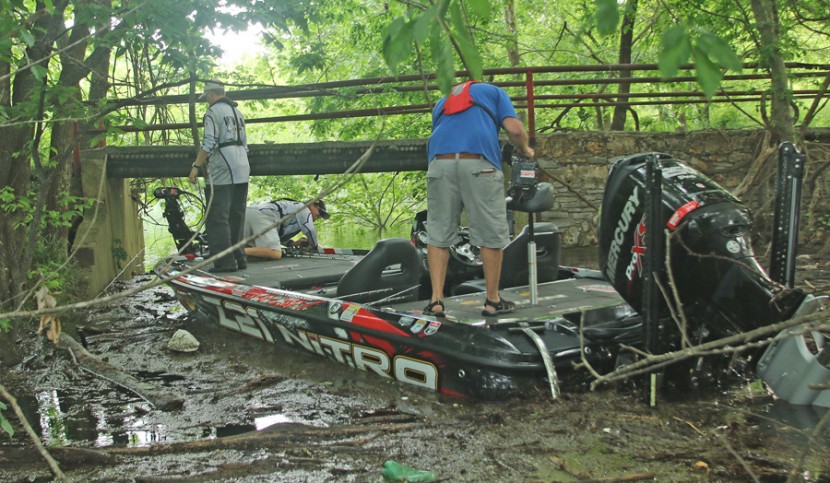
As Edwin Evers raced to Tuesday’s angler meeting, he sounded a bit relieved that the water levels on Kentucky Lake are stable compared to the flooded waters he’s been fishing in his home state of Oklahoma.
“It’s two completely different scenarios,” he said after his final practice for the Zippo BASSfest at Kentucky Lake presented by A.R.E Truck Caps. “Grand is flooded. It’s just a little bit high in Kentucky.”
Late last week, Evers was plying rising waters on Grand Lake in Grove during the latest OPTIMA Batteries Wounded in Action Healing Heroes event. Evers knew where to go, even calling his shot to land a fish from a submerged flowerpot in the backyard of a lake residence.
Knowing what bass do in high water is key to the puzzle.
“If they’re not anywhere near the current, they’re just going to get on a piece of cover right where they’re at,” he said. “In two or three days, once that water comes up, they move up with it.”
While a flooded flat might look inviting, he suggests staying away from any areas where the fish can really scatter. Anglers might find the needle in the haystack, but the odds aren’t with you.
“The things that I look for, one, is to get to the bank,” he said. “When stuff is really, really flooded, you have to find stuff to get to the bank. You’re looking for steeper banks, areas where that water can’t get away from you.
“Giant, flooded forests, when the water is super high, there’s too many places for the fish to hide. There’s no place for them to concentrate. If it’s real flat, they’ll get away from you.”
Evers instead prefers steep edges, like where he found the flowerpot fish. He said riprap is another prime example.
One thing to look for, he said, is current. In most high water situations, there’s generally going to be water moving.
“It could be current coming in the back of a pocket from rain, culverts,” Evers said. “There’s runoff, or it could be current that’s going through the lake, main lake points and cut-throughs to islands. Anywhere that current constricts around a point, you can have fish.”
He added that finding areas with baitfish is really important as well as fishing cleaner water. He warns to stay clear of the truly muddy waters.
Another anomaly in quickly rising waters are sawdust piles, which can be fished just like vegetation mats in Florida.
“On these reservoirs around here, all the leaves, bark and sawdust on the ground floats up,” he said. “It gets in pockets and corners and it’s great. You just punch through that mat. I’ve caught them really, really good doing that.”
Evers used his final bit of high water wisdom on Grand, when he cleared out an area logs and hand pulled his boat under a small bridge that was usually high and dry. He even caught a fish in the newly accessible backwater.
“Sometimes the high water gives you access into areas you normally couldn’t get into,” he said.
Evers has been known for that, and for catching fish in all conditions, even flood waters.


